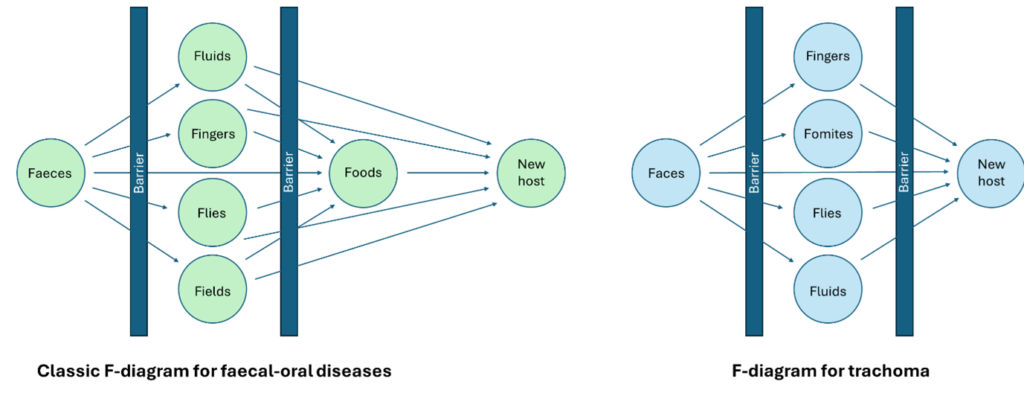
August 29th, 2024
What is trachoma and to what extent would fly control and household hygiene prevent its spread?
By Robert Jones, Arctech Innovation
Trachoma is the most common infectious cause of blindness globally. It is caused by repeated infection of the eye with the bacterium Chlamydia trachomatis, and occurs in resource-poor areas with inadequate hygiene. Although it has been known for over 3,500 years that trachoma can cause blindness, there remain important unanswered questions on how it is transmitted from eye to eye.
Close person-to-person contact allows the bacteria to pass from an infected individual to a vulnerable host, and fomites, such as towels and items of clothing, also allow for indirect transmission.
In addition, face-seeking flies have been incriminated in the spread of trachoma. The fly Musca sorbens, which is closely related to common house flies, is particularly common around the faces of children in rural African settings, and in Ethiopian villages with high trachoma prevalence almost a quarter of these flies caught leaving the faces of children were found to be infected with C. trachomatis.
Scientists have used an ‘F diagram’ to represent the transmission pathways of faecal-oral diseases such as diarrhoea. If we were to recreate this diagram and make it specific to trachoma, we can see that there are opportunities to prevent transmission by introducing appropriate barriers, such as by washing hands that have contacted faces, cleaning contaminated clothing, or preventing contaminated flies from reaching a new host.

To what extent would fly control and household hygiene prevent the spread of disease?
Research at LSHTM is helping to answer these questions, as well as provide insights into fundamental questions about trachoma transmission, with the intention of finding new ways to save people from this debilitating disease.
References
Mabey, D. C. W. Solomon, A. W. and Foster, A “Trachoma,” The Lancet, vol. 362, no. 9379, pp. 223–229, Jul. 2003, doi: 10.1016/S0140-6736(03)13914-1.
Miller K, et al., “Pesky trachoma suspect finally caught,” British Journal of Ophthalmology, vol. 88, no. 6, pp. 750–751, Jun. 2004, doi: 10.1136/BJO.2003.038661.
Last A, et al., “Detecting extra-ocular Chlamydia trachomatis in a trachoma-endemic community in Ethiopia: Identifying potential routes of transmission,” PLoS Negl Trop Dis, vol. 14, no. 3, Mar. 2020, doi: 10.1371/JOURNAL.PNTD.0008120.
Curtis, V., & Cairncross, S. Effect of washing hands with soap on diarrhoea risk in the community: a systematic review. The Lancet Infectious Diseases, 3(5), 275-281. 2003. doi:10.1016/s1473-3099(03)00606-6